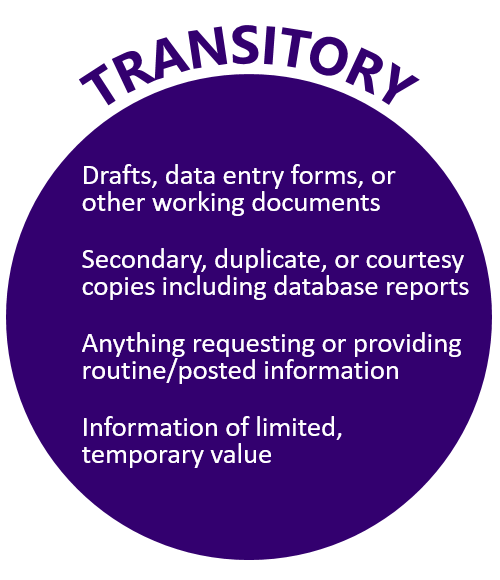All records at the University of Washington, regardless of format, fall into one of the two following categories based on both their content and function:


- Transitory records are those created or received to pass along information of very temporary value or as part of a more formalized record.
- They represent the majority of the records that are created at the University.
- Some have reference value but typically only in the short-to-mid term.
- These records should be destroyed as soon as they have outlived their reference purpose.
- Substantive records are documents that provide a record of the function of your office.
- They likely represent a smaller percentage of the total volume of records in your office.
- These records must remain accessible and readable for a the full retention period as defined by a legally-approved records retention schedule, even if you do not refer back to them.
- They should be destroyed once the retention period is up.
It is important to dispose of records once the retention period expires in order to minimize risk to the University as well as reduce administrative overhead for your office.
For more examples of transitory records, see:
Materials that may be disposed of without a specific retention period
Electronic records that do not need to be printed or saved
If you have questions or would like help separating the two, please contact us at recmgt@uw.edu or 206-543-6190 or schedule an appointment to meet with our ROT Squad.